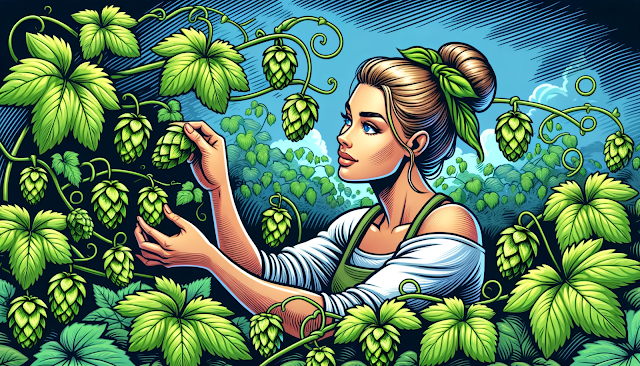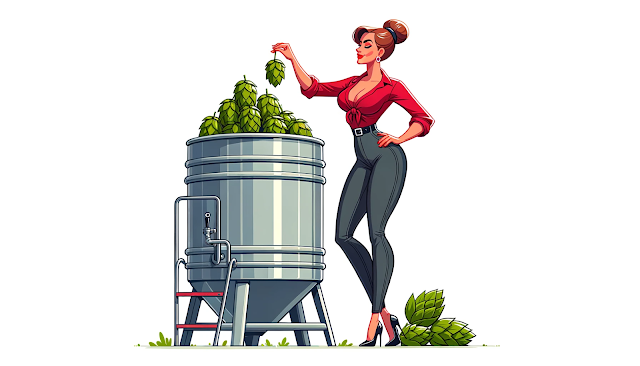The Science Behind Dry Hopping
Hop Oils and Aromatics
Hops contain essential oils like myrcene, humulene, and caryophyllene, which are responsible for the distinctive aromas. When hops are added during the boil, these oils can evaporate. However, with dry hopping, these oils directly infuse into the beer, lending their characteristic aromas.
Solubility Factors
The effectiveness of dry hopping is influenced by various factors like temperature, contact time, and alcohol content. Typically, warmer temperatures facilitate better solubility of hop oils, enhancing the aroma profile.
Choosing the Right Hops
Aroma Profiles
Different hop varieties possess unique aroma profiles, from citrusy, piney, fruity, to floral. Familiarizing oneself with these profiles is key to achieving the desired aroma in the beer. Learn what the noble hops are!
Freshness Matters
Always opt for fresh hops. Aged or stale hops can introduce undesirable aromas or even fail to impart any aroma at all.
Techniques and Equipment
Traditional Dry Hopping
Dry hopping in its most traditional form involves the direct addition of hop pellets or whole cone hops to the fermenter. This method, which has been practiced for centuries, relies on the natural process where hops gradually release their essential oils and aromatic compounds into the beer. Over a span of several days, the hops will naturally settle at the bottom of the fermenter. While this method is straightforward, brewers should be mindful of the contact time.
Hop Bags and Infusers
The use of hop bags and infusers offers a refined approach to dry hopping. By placing hops inside mesh bags or metal infusers, brewers can prevent the direct mixing of hop particles with the beer. This method is especially beneficial for those who seek clarity in their brews, as it minimizes the amount of hop residue that might remain suspended in the beer.
Recirculation Systems
In the quest for maximizing aroma extraction, some advanced breweries have turned to recirculation systems. These systems, often employed in larger commercial setups, involve continuously pumping the beer over the hops. The constant movement increases the beer's exposure to the hops, ensuring that a maximum amount of aromatic compounds are extracted. It's a method that combines both science and art, as brewers must carefully monitor the recirculation to prevent over-extraction, which can lead to overpowering or unbalanced aromas.
Duration and Timing
Contact Time
Typically, dry hopping durations range from a few days to a couple of weeks. Longer durations might lead to grassy or vegetal notes.
Multiple Additions
Some brewers advocate for multiple dry hopping stages, believing that it layers the aromatics, creating a more complex aroma profile.
Potential Pitfalls and Solutions
Overpowering Aromas
Overdoing dry hopping can lead to overwhelmingly strong aromas. It's essential to strike a balance and remember that dry hopping is about enhancing, not overpowering.
Oxidation Risks
Introducing hops post-fermentation can risk oxidation. Ensure that the fermenter is sealed properly and minimize the beer's exposure to air.
Vegetal Off-Flavors
Extended contact time can lead to unwanted flavors. Monitoring and timely removal of hops can mitigate this issue.
Exploring Aromatic Possibilities
While dry hopping is deeply rooted in the world of ales, there's nothing stopping adventurous brewers from experimenting with other beer styles. From lagers to stouts, the aromatic possibilities are vast and waiting to be explored.
By diving deep into the art and science of dry hopping, brewers can unlock layers of aromatic complexity, elevating the sensory experience of beer enthusiasts. Whether you're a novice homebrewer or a seasoned professional, mastering dry hopping can truly set your beers apart, captivating palates with every aromatic sip.




